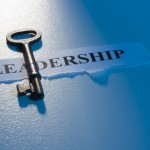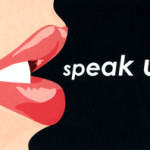Posted on 04 July 2017 Comments (0)
Tags: Anna's Posts, Appearance, Attitude, Behaviors, Body Language, Business Etiquette, Business Social Etiquette, Career Builders, Civility, communication, Leadership Presence, Personal Development, Professional Development
 A handshake is a personal touch to establish a relationship. The dictionary states that a handshake is “a gripping and shaking of right hands by two individuals, as to symbolize greeting, congratulation, agreement, or farewell.”
A handshake is a personal touch to establish a relationship. The dictionary states that a handshake is “a gripping and shaking of right hands by two individuals, as to symbolize greeting, congratulation, agreement, or farewell.”
I am continually surprised at the greeting handshakes that are either only finger tips touching or the grip is so strong it hurts. If you cannot shake hands for health reasons, just say I would love to shake your hand but I have a terrible cold or ___. It is better to speak up than to ignore shaking hands.
The five-star handshake is palm to palm, nice and firm with one or two pumps made while you look each other directly in the eye. This handshake says I want to get to know you.
 Hugging in professional setting is really only acceptable when folks have a long term relationship and hugging has been established early on. If you want to hug someone, ask for permission to do so.
Hugging in professional setting is really only acceptable when folks have a long term relationship and hugging has been established early on. If you want to hug someone, ask for permission to do so.
If you are not a hugger and have been asked if you can be hugged, it is your right to say no. However, do so in a way that lets the person know you want to have a relationship with them.
Hugging can be tricky when it involves men and women so proceed with caution. I personally like hugging a long term friend and client. It says to them I enjoy working with you.
Posted on 25 May 2017 Comments (0)
Tags: Anna's Posts, Appearance, Attitude, Behaviors, Body Language, Career Builders, Coaching, Leadership, Leadership Presence, Men's Appearance, Professional Development, Women's Appearance
 Often, I observe technically competent folks with reasonable communications skills rise up the ladder pretty quickly and then hit a wall. The C-Suite does not see them as the face of the organization. This usually is first impressions garnered on connecting with an audience. It is the way they carry themselves meaning posture, pace and how they look any audience in its collective eye.
Often, I observe technically competent folks with reasonable communications skills rise up the ladder pretty quickly and then hit a wall. The C-Suite does not see them as the face of the organization. This usually is first impressions garnered on connecting with an audience. It is the way they carry themselves meaning posture, pace and how they look any audience in its collective eye.
Also, it’s putting together clothing choices, grooming and the key ingredient of style and confidently navigating situations. They can be cut some slack if it is noticed that confidence and communication skills promote steadiness. Can some develop the critical factor of presence to move into the C suite? Yes, with the right coach, mentors and champions, the C-Suite is a possibility!
 What is the trigger or triggers that confirm you are in the much fabled zone of doing nothing wrong? Do you sense the zone from the calmness of your breathing, steadiness in your hands or acute awareness of the positive things surrounding you?
What is the trigger or triggers that confirm you are in the much fabled zone of doing nothing wrong? Do you sense the zone from the calmness of your breathing, steadiness in your hands or acute awareness of the positive things surrounding you?
This reminds me of playing in golf tournaments when my swing is in the groove. That is when the golf ball goes straight and the putts go in on the first stroke. The zone is also the time to push yourself a bit more whether on the links, presenting to a small group or speaking to thousands!
Posted on 11 February 2017 Comments (0)
Tags: Anna's Posts, Appearance, Attitude, Behaviors, Body Language, Leadership Presence, Men's Appearance, Men's style and wardrobe, Men's wardrobe, Women Wardrobe, Women's Appearance
 Looking the part is the first step and a very important one. It is a combination of what and how something is worn. When an outfit does not fit properly or the color does not flatter you then the choice of the clothing is not appropriate for the occasion.
Looking the part is the first step and a very important one. It is a combination of what and how something is worn. When an outfit does not fit properly or the color does not flatter you then the choice of the clothing is not appropriate for the occasion.
Look at the leaders in the organization to see what makes their look resonate. This will help you discover what creates the right look for the role.
Posted on 09 January 2017 Comments (0)
Tags: Anna's Posts, Appearance, Attitude, Behaviors, Body Language, Career Builders, Leadership Presence, Men's Appearance, Presentation Visual Impact, Professional Development, Women's Appearance
 Recently, I heard a comment about an executive that leadership-wise, he was not runway material. What exactly is runway material? It is someone who enters the room with confidence, poise and an understanding of the audience.
Recently, I heard a comment about an executive that leadership-wise, he was not runway material. What exactly is runway material? It is someone who enters the room with confidence, poise and an understanding of the audience.
This person intuitively understands the emotional intelligence necessary to make a connection. Once a leader shows senior management s/he are runway material, the path to the C Suite opens wide!
 There is never a bad time in your work environment to discreetly and judiciously project an image above your pay grade. But a particularly good time is when you are called upon to make an appearance before your most senior executives or Board of Directors. On these occasions, you must not underestimate the importance of body language. Your posture and engagement with that group must project the message that you belong at that table. Listen attentively so that you are sure of not only what has been said, but also what has been meant. Think carefully about what you are going to say and how you say it. Words matter, especially if you are careful not to use more than you need. And of course, give whatever assignments from that encounter that come your way your highest priority. In many companies, there is an executive pattern of behavior that is just a shade more refined than what most of us experience on a day-to-day basis. Think about how you can become comfortable with that behavior.
There is never a bad time in your work environment to discreetly and judiciously project an image above your pay grade. But a particularly good time is when you are called upon to make an appearance before your most senior executives or Board of Directors. On these occasions, you must not underestimate the importance of body language. Your posture and engagement with that group must project the message that you belong at that table. Listen attentively so that you are sure of not only what has been said, but also what has been meant. Think carefully about what you are going to say and how you say it. Words matter, especially if you are careful not to use more than you need. And of course, give whatever assignments from that encounter that come your way your highest priority. In many companies, there is an executive pattern of behavior that is just a shade more refined than what most of us experience on a day-to-day basis. Think about how you can become comfortable with that behavior.
Posted on 01 July 2016 Comments (0)
Tags: Anna's Posts, Attitude, Behaviors, Body Language, Career Builders, communication, Leadership Presence, Listening, Men's Appearance, Personal Development, Professional Development, Relationship Building, Team Building, Women's Appearance
 Improv is about making the person next to you look good. I took a year of Improv at Second City in Chicago to help me be a better speaker. It also helped me design some experiential programs for speaking to audiences about personal branding and interpersonal skills. Improv helps in networking where thinking on your feet is useful because it encourages you to begin a conversation that is inclusive and not intrusive. Improv recently was featured in the New York Times business section on how team Improv can build creativity in thinking.
Improv is about making the person next to you look good. I took a year of Improv at Second City in Chicago to help me be a better speaker. It also helped me design some experiential programs for speaking to audiences about personal branding and interpersonal skills. Improv helps in networking where thinking on your feet is useful because it encourages you to begin a conversation that is inclusive and not intrusive. Improv recently was featured in the New York Times business section on how team Improv can build creativity in thinking.
Posted on 19 April 2016 Comments (0)
Tags: Anna's Posts, Appearance, Attitude, Behaviors, Body Language, Business Etiquette, Business Social Etiquette, Career Builders, communication, Leadership, Leadership Presence, Men's Appearance, Professional Development, Relationship Building, Women's Appearance
 How many times have you been in meeting and notice that the person you are speaking with completely changes facial expression and body language? This signals that the person is not on the same page with you. What should you do if this happens?
How many times have you been in meeting and notice that the person you are speaking with completely changes facial expression and body language? This signals that the person is not on the same page with you. What should you do if this happens?
Asking a question to reengage the person is critical. The question must have elements that will bring the person back to the conversation. Never intrusive always inclusive, and if appropriate, a why, how or what question. Pay attention to their facial expression and body language to make sure you are getting their attention. Wait for the answer.
Posted on 31 March 2016 Comments (0)
Tags: Anna's Posts, Appearance, Attitude, Behaviors, Body Language, Business Etiquette, Business Social Etiquette, Career Builders, communication, Leadership, Leadership Presence, Personal Development, Professional Development, Relationship Building, Social Etiquette
 How many times have you not been introduced when in a group? To overcome that and become visible is to introduce yourself. This helps the person who might have forgotten a name or two while simultaneously getting make you noticed. This is also how you become visible in a networking situation when meeting with new folks. Remember to add a smile before you even open your mouth, especially when riding on an elevator!
How many times have you not been introduced when in a group? To overcome that and become visible is to introduce yourself. This helps the person who might have forgotten a name or two while simultaneously getting make you noticed. This is also how you become visible in a networking situation when meeting with new folks. Remember to add a smile before you even open your mouth, especially when riding on an elevator!
 A handshake is a personal touch to establish a relationship. The dictionary states that a handshake is “a gripping and shaking of right hands by two individuals, as to symbolize greeting, congratulation, agreement, or farewell.”
A handshake is a personal touch to establish a relationship. The dictionary states that a handshake is “a gripping and shaking of right hands by two individuals, as to symbolize greeting, congratulation, agreement, or farewell.”

 Hugging in professional setting is really only acceptable when folks have a long term relationship and hugging has been established early on. If you want to hug someone, ask for permission to do so.
Hugging in professional setting is really only acceptable when folks have a long term relationship and hugging has been established early on. If you want to hug someone, ask for permission to do so. Often, I observe technically competent folks with reasonable communications skills rise up the ladder pretty quickly and then hit a wall. The C-Suite does not see them as the face of the organization. This usually is first impressions garnered on connecting with an audience. It is the way they carry themselves meaning posture, pace and how they look any audience in its collective eye.
Often, I observe technically competent folks with reasonable communications skills rise up the ladder pretty quickly and then hit a wall. The C-Suite does not see them as the face of the organization. This usually is first impressions garnered on connecting with an audience. It is the way they carry themselves meaning posture, pace and how they look any audience in its collective eye. Looking the part is the first step and a very important one. It is a combination of what and how something is worn. When an outfit does not fit properly or the color does not flatter you then the choice of the clothing is not appropriate for the occasion.
Looking the part is the first step and a very important one. It is a combination of what and how something is worn. When an outfit does not fit properly or the color does not flatter you then the choice of the clothing is not appropriate for the occasion. Recently, I heard a comment about an executive that leadership-wise, he was not runway material. What exactly is runway material? It is someone who enters the room with confidence, poise and an understanding of the audience.
Recently, I heard a comment about an executive that leadership-wise, he was not runway material. What exactly is runway material? It is someone who enters the room with confidence, poise and an understanding of the audience. There is never a bad time in your work environment to discreetly and judiciously project an image above your pay grade. But a particularly good time is when you are called upon to make an appearance before your most senior executives or Board of Directors. On these occasions, you must not underestimate the importance of body language. Your posture and engagement with that group must project the message that you belong at that table. Listen attentively so that you are sure of not only what has been said, but also what has been meant. Think carefully about what you are going to say and how you say it. Words matter, especially if you are careful not to use more than you need. And of course, give whatever assignments from that encounter that come your way your highest priority. In many companies, there is an executive pattern of behavior that is just a shade more refined than what most of us experience on a day-to-day basis. Think about how you can become comfortable with that behavior.
There is never a bad time in your work environment to discreetly and judiciously project an image above your pay grade. But a particularly good time is when you are called upon to make an appearance before your most senior executives or Board of Directors. On these occasions, you must not underestimate the importance of body language. Your posture and engagement with that group must project the message that you belong at that table. Listen attentively so that you are sure of not only what has been said, but also what has been meant. Think carefully about what you are going to say and how you say it. Words matter, especially if you are careful not to use more than you need. And of course, give whatever assignments from that encounter that come your way your highest priority. In many companies, there is an executive pattern of behavior that is just a shade more refined than what most of us experience on a day-to-day basis. Think about how you can become comfortable with that behavior. How many times have you been in meeting and notice that the person you are speaking with completely changes facial expression and body language? This signals that the person is not on the same page with you. What should you do if this happens?
How many times have you been in meeting and notice that the person you are speaking with completely changes facial expression and body language? This signals that the person is not on the same page with you. What should you do if this happens? How many times have you not been introduced when in a group? To overcome that and become visible is to introduce yourself. This helps the person who might have forgotten a name or two while simultaneously getting make you noticed. This is also how you become visible in a networking situation when meeting with new folks. Remember to add a smile before you even open your mouth, especially when riding on an elevator!
How many times have you not been introduced when in a group? To overcome that and become visible is to introduce yourself. This helps the person who might have forgotten a name or two while simultaneously getting make you noticed. This is also how you become visible in a networking situation when meeting with new folks. Remember to add a smile before you even open your mouth, especially when riding on an elevator!

